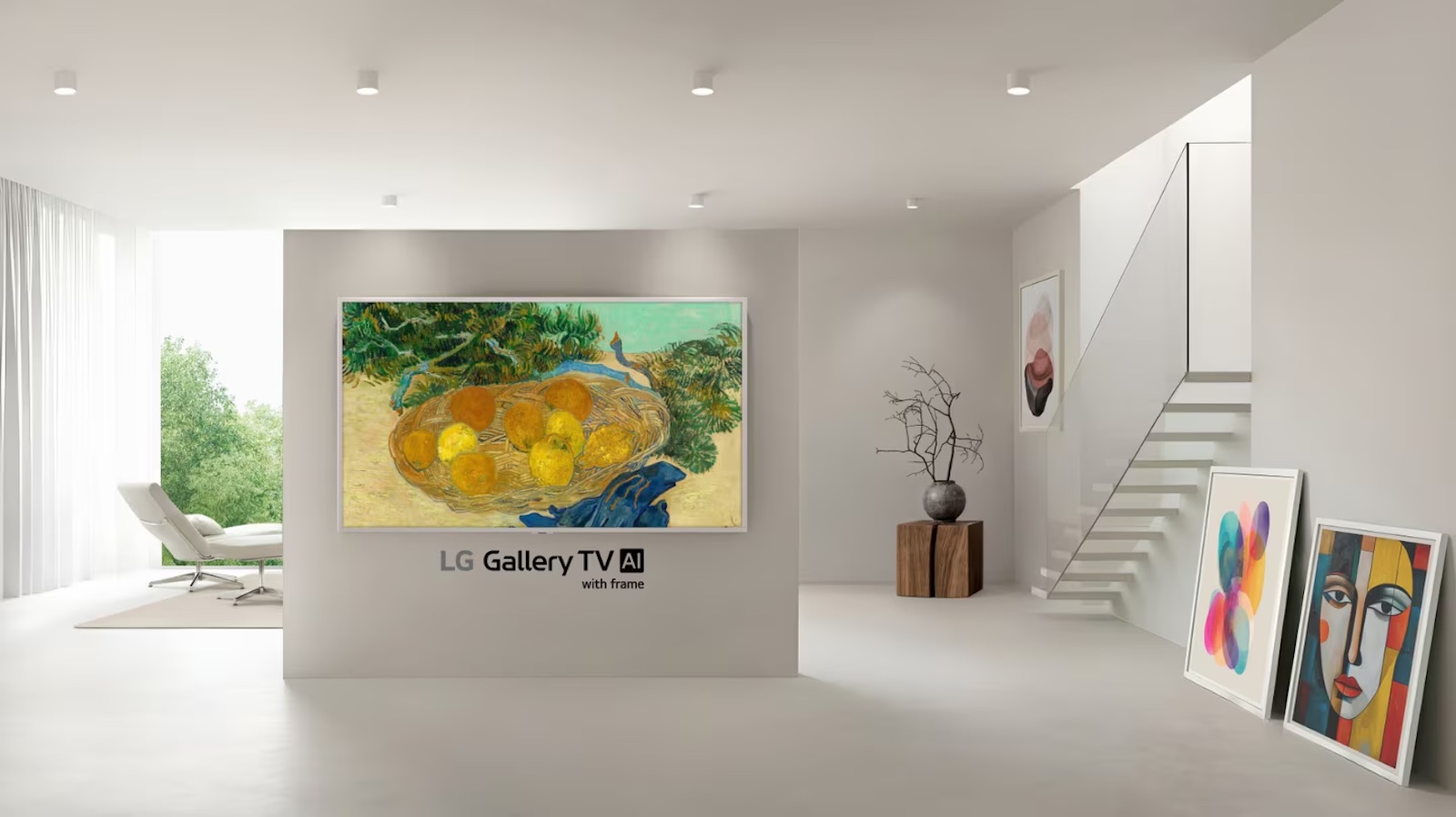PSB Speakers: a brief history
We speak with Paul Barton, the P & B in Canada's PSB Speakers, about music, speakers, and his journey from a home-built violin to a global loudspeaker business.

Almost every time the story of PSB Speakers is told, the tale begins with an anecdote about the childhood of company founder and chief designer Paul Barton. He is the P and the B in PSB, while the S was added in the middle for his high-school sweetheart Sue, woven into the logo he had doodled during geography class at school. P & S ended up marrying, so forming their own P & S B, which should be no surprise, for who could resist being tagged in a loudspeaker brand name!
Through his later high-school years the young Paul Barton worked part-time at a local hi-fi shop, where despite his youth the owner allowed him to build and sell speaker kits to local university students. Barton then launched his company PSB straight out of school, co-funding the start-up money with two friends.
But the anecdote in question goes back before that, and illustrates Barton’s early connections with music. At age 11, as the story goes, he was given a violin by his father, who had made it himself, with Barton looking on during the process, learning to appreciate the skills and techniques that go into making a musical
instrument, something he later transposed to the art of loudspeaker making.

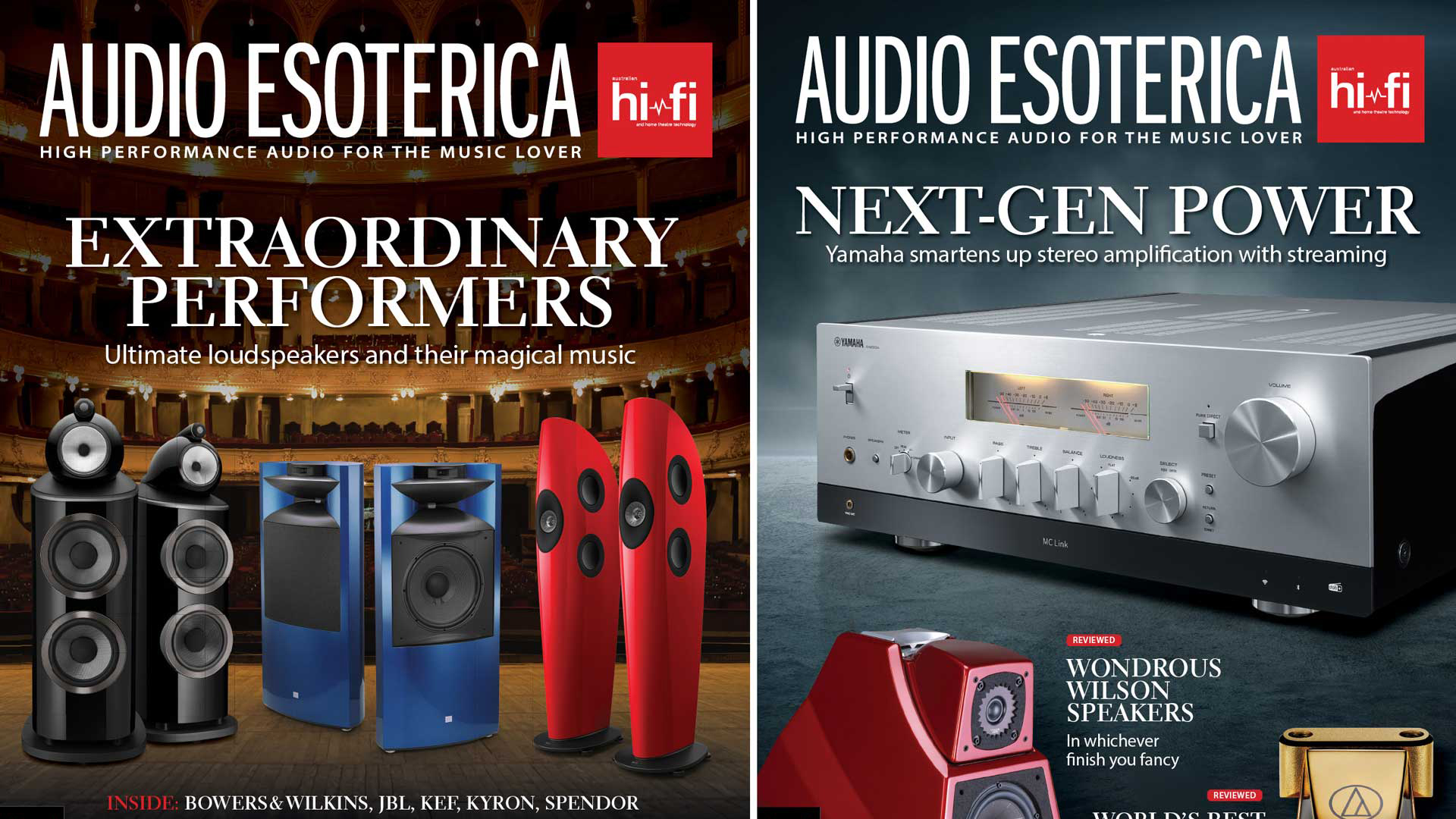
This review originally appeared in Audio Esoterica magazine, one of What Hi-Fi?’s Australian sister publications, available in print and digital editions Click here for for a Readly special offer, including access to Audio Esoterica's digital editions.
We thought this anecdote curious for some of the questions it leaves unanswered. His father managed to make a full-sized violin despite not being a luthier? And had the young Paul actually asked for a violin? Was he already awakened to music by that young age?
There was only one way to find out: we asked the man himself.
“Yes, my father did build my violin,” Paul Barton confirms to us from his home in Ontario, Canada. “And it was the one and only violin that he built. I don’t think he did any woodworking prior to making the violin — in fact, he bought the main woodworking bench and all his woodworking tools just before he started making it. I was nine years old then — it took him two years to complete it, so I was 11 then, in 1963. The violin was signed on a label inside the violin that says ‘Made especially for Paul Barton by his father in Kitchener, 1963’.
“I didn’t really ask for the violin, but it was certainly necessary to consider a full-size violin, which is what this was. I would be getting big enough by age 11 to need a full-size violin. And, in fact, before he started making the violin he had bought a full-size one at auction, but when he got the violin home it proved to be… inadequate. But he’d got a good price on it — and it included a great violin case, which I still use today for the violin he made me.”
The latest hi-fi, home cinema and tech news, reviews, buying advice and deals, direct to your inbox.
And how had the music already entered Barton’s life?
“Again, my father. His day job was as an industrial steel salesman, but his real passion in life was music. He was trained as a tenor — he was very good, and in fact started the local operatic society and worked with them for years performing every musical you can think of.
“Meanwhile, the local school board had a very strong music programme, especially in stringed instruments, and I was enrolled at the early age of six, and they never looked back. I got private lessons from a few years later, and carried on with them until I was 19.”
During that time he played as a young musician with Canada’s National Youth Orchestra and the University of Toronto’s Repertoire Orchestra. But during a Grade 10 physics project, the young Barton had found another path to music — loudspeaker building.
And by the age of 19, his plan for PSB Speakers had taken shape.
First fruits
The pooled start-up money allowed the school-leaving Barton to obtain factory space in St. Jacobs, Ontario, half an hour north-northwest of his hometown Kitchener, while between the two was the University of Waterloo, which usefully had an audio lab from which the renowned Audio Research Group would grow under Stanley Lipshitz and John Vanderkooy.
For two-and-a-half years the young Paul Barton was schooled at the University by day, then joined his two friends at the St Jacob ‘plant’ for the evening. He finally chose PSB over college, and St Jacobs remained the company’s home for the next eight years.
One early design – it turns half a century old this year – was the Beta II,
a 23-inch-high standmount speaker with a dome tweeter and eight-inch woofer, and unusual in its use of servo feedback, where the cone’s motion is used as a feedback signal to the input, in this case with a comparison circuit and an accelerometer mounted on the cone. That idea was what inspired the ‘Beta’ name.
“In electronics you have the alpha signal, which is the forward signal, and the beta signal, which is the feedback,” notes Barton. “And this was one of the first of its kind, a type of design still actively used today. But the Beta II is also a significant product because it was the catalyst that got me introduced to Floyd Toole at the National Research Council.”
Dr Toole & the NRC
The National Research Council is a nationwide organisation of government-funded institutions in Canada, with its main campus in Ottawa. And the Ottawa NRC is a legendary location among loudspeaker aficionados, with Dr Floyd Toole a legend within that legend. He had joined the NRC’s Division of Applied Physics in 1965, his research focusing on the acoustics and psychoacoustics of sound reproduction, and how engineering measurements could be improved.
This had spurred the development of the acoustics facilities at the National Research Council in Ottawa, with an anechoic chamber and a space for listening assessments producing data which became the basis for Dr. Toole’s output of revelatory research papers over the years (why not spend a weekend checking out his research here), ultimately combined in his reference work ‘Sound Reproduction’.
This significant tome is known in the offices of Sound+Image as ‘the Big Green Book’ (even though the latest edition is disappointingly ungreen). This writer once spent a day with Dr. Toole as he judged CEDIA entries, and it was a big learning experience in just a short time, because he is such a natural teacher.
Barton’s own introduction to Floyd Toole came through a hi-fi journalist.
“Through Ian Masters, yes, the editor of an audio magazine in Canada called Audio Scene,” remembers Barton. “Floyd had been helping Ian to do speaker measurements and evaluations for the magazine at NRC, and in 1974 Ian called me one day and said that Floyd had seen a pair of PSB Speakers in Ian’s office that we had submitted for evaluation, and Floyd was interested in maybe meeting me. Arrangements were made and I took the six-hour drive from my home town Kitchener to Floyd’s home in Ottawa.
“We really hit it off well, and I was really excited about what I could learn from Floyd. I was only 22 years old. It was a dream come true.”
And the start of a beautiful friendship.
“Floyd was and still is my mentor,” says Barton. “Very quickly after we met, we became very good friends – in fact, when Floyd lived in Ottawa I would often stay at Floyd and Noreen’s home when I was doing work there. So we worked and played together, you could say. Not to mention listening to a lot of music together.”
Meanwhile, Barton was one of the first to use the NRC’s anechoic chamber for loudspeaker design, applying and developing Toole’s ideas on correlating technical loudspeaker measurements with ‘good’ sound as defined by listeners in the NRC’s legendary double-blind screened listening suite (see pictures below).
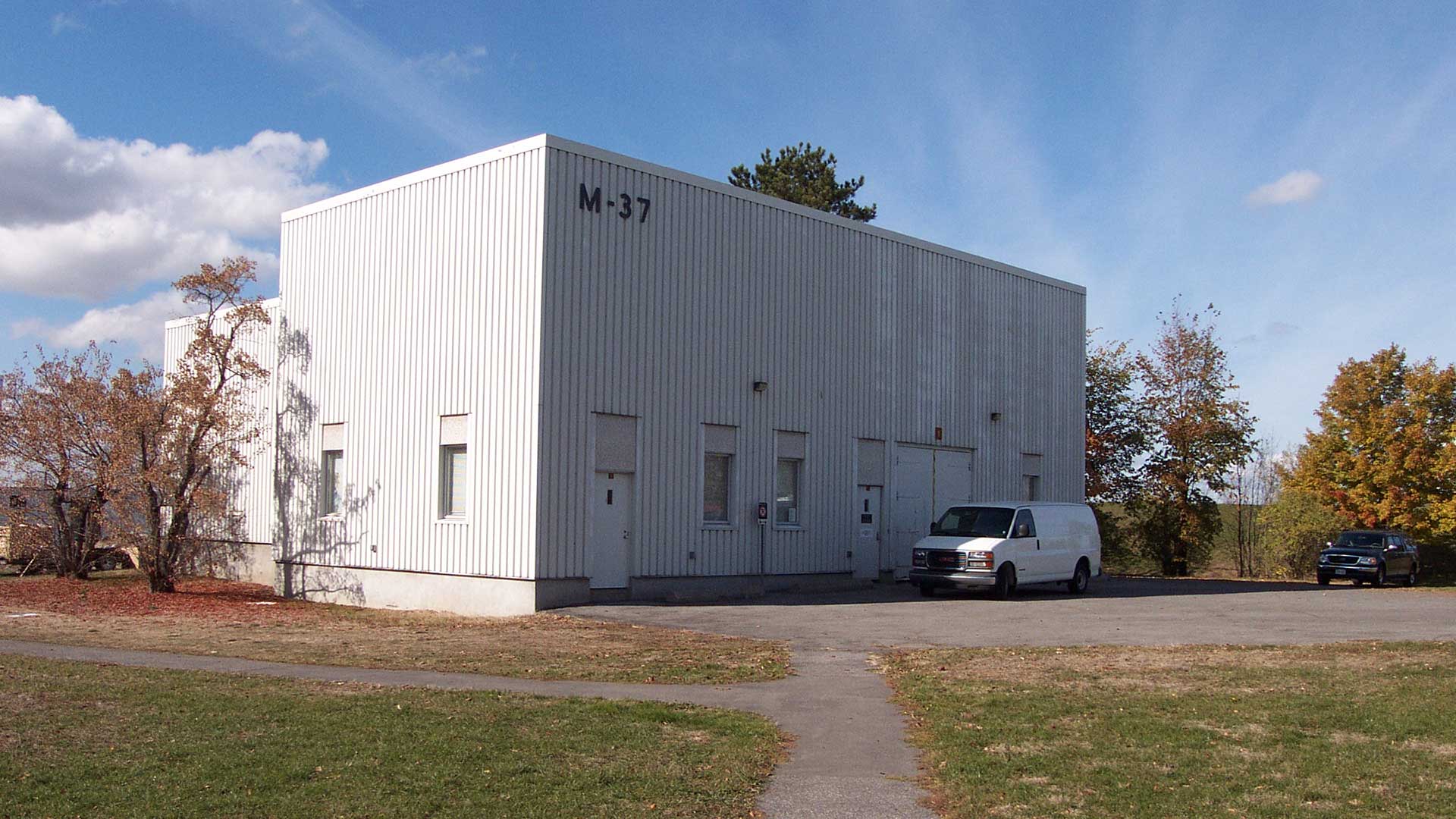
National Research Council
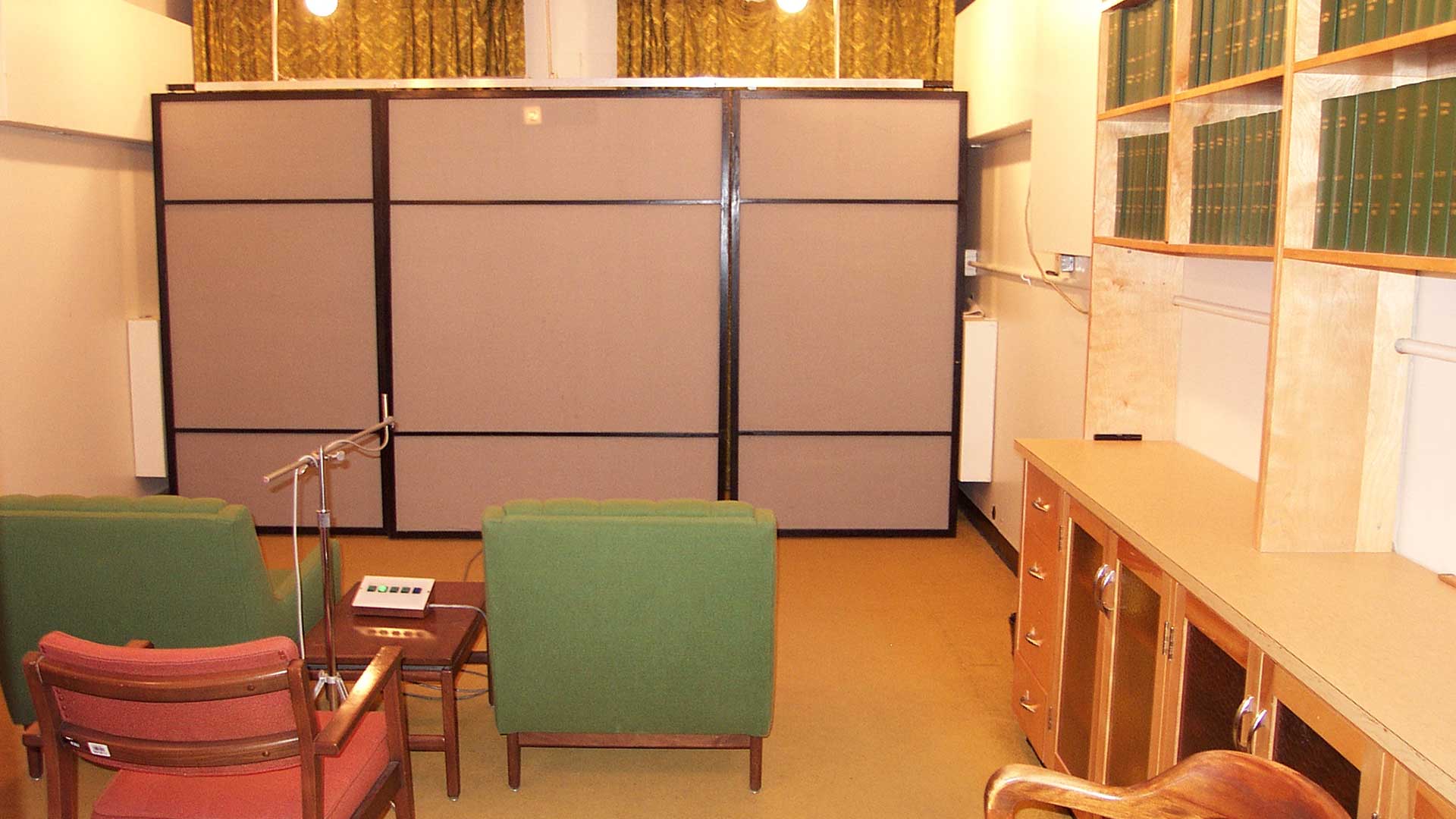


“The main realisation was how important the on- and off-axis frequency response measurements are,” says Barton, “and more importantly how to interpret the measurements as it relates to what people will hear. That’s something I am learning more about each day. I am now focused a lot on understanding how the complicated human brain processes sound – I am still learning! But not with the significant improvement of my early learnings with Floyd’s help. Those were the learning years for me.”
One great realisation from the NRC listening sessions was that people on the whole agreed about what was ‘good’, no matter where they came from or their level of listening experience.
This was a revelation at a time when sound was considered far more subjective, both internationally and even coast to coast within the US.
“Musical taste and musical experience seem to be no prerequisites for bring a good judge of sound quality,” as Barton told videocaster Shane Lee last year. “Just because you say you have a tin ear, if you’ve got normal hearing and you’ve lived in the world and listened to natural sounds, you are a good judge of sound, you can hear colourations. Sometimes it takes longer for people who aren’t experienced, but when given the task to choose what they like, they seem to all gravitate towards ‘good’ speakers. There’s no personal taste.”
Along with that, the NRC’s research was also showing that a properly interpreted set of objective loudspeaker measurements would correlate directly with the subjective evaluations made by listening to the loudspeakers.
“And boy is that ever a lot of good information when you’re designing a loudspeaker!” enthuses Barton.
It set him on the path. For the rest of the 1970s and into the 80s, PSB was the only speaker brand able to use the NRC’s anechoic chamber and double-blind listening room, the combination of measurements and double-blind listening becoming the basis on which a new generation of PSB Speakers was honed.

Passif goes massive
PSB’s official history describes the Passif II as “the culmination of years of Barton’s research at the NRC”. But it was launched in 1974, only a year after the Beta II, and the very year Barton first visited the NRC. So the timeline seems out somewhere?
“We made versions of the Passif II from 1974 to 1990,” he explains of what was then their top-of-the-line design. “The research for me started on the Passif II, as well as other models, shortly after I met Floyd in 1974, and I refined the product’s versions over several years, so that each version reflected what I was learning as the years went by. After the first version, most of the improvements were incremental but measurable and audible.”
One thing being realised at NRC was that the perceived sound signature of a speaker was being created not only from the direct on-axis sound, but also of this summed with second arrivals from mainly side-wall reflections. Yet the sound signature that he evolved for PSB Speakers is really the opposite of a ‘sound’ at all — it’s described these days by the company as “true-to-nature, transparent, and non-fatiguing”. Whether a sound signature or a lack of one, it proved a highly successful formula.
“Around 1984 the CBC (Canadian Broadcast Corporation) approached the NRC to help determine recommendations for a small studio monitor to be used across Canada,” says Barton. “The Passif II was one of few that were recommended. Floyd included this test in his AES Papers, about his research at the beginning; he called it the ‘CBC test’.”
This gave the Passif II great traction in pro as well as consumer audio. But by then, PSB had also introduced the Project B2, a standout design for two reasons.
“I wanted to not make it look like a speaker box,” he says of the Project B2’s wide and angled front baffle, which extends beyond the smaller rear speaker enclosure itself on three sides. This design alone Barton considers “a turning point for PSB – it put us into another league, so to speak.”
But equally novel was the flipped driver arrangement, woofer above tweeter – something that would carry on into future PSB products. Barton describes this as his preferred way to deal with the differences in timing between two non-coincident drivers in a two-way design. Most speakers, he explains, will have a time discrepancy that’s different depending on whether you’re standing up, or sitting, or on the floor. Barton realised that with the fourth-order Linkwitz-Riley crossover he was using on the Project B2, the combined response lobe would tilt in the direction of the woofer, so that the speaker would sound very similar whether you stand or sit.
“I suppose I could put the tweeter above if I put in a stepped baffle and played with that,” he once noted, “but it’s meant to be a very simple design. So that’s why the tweeter is below.”
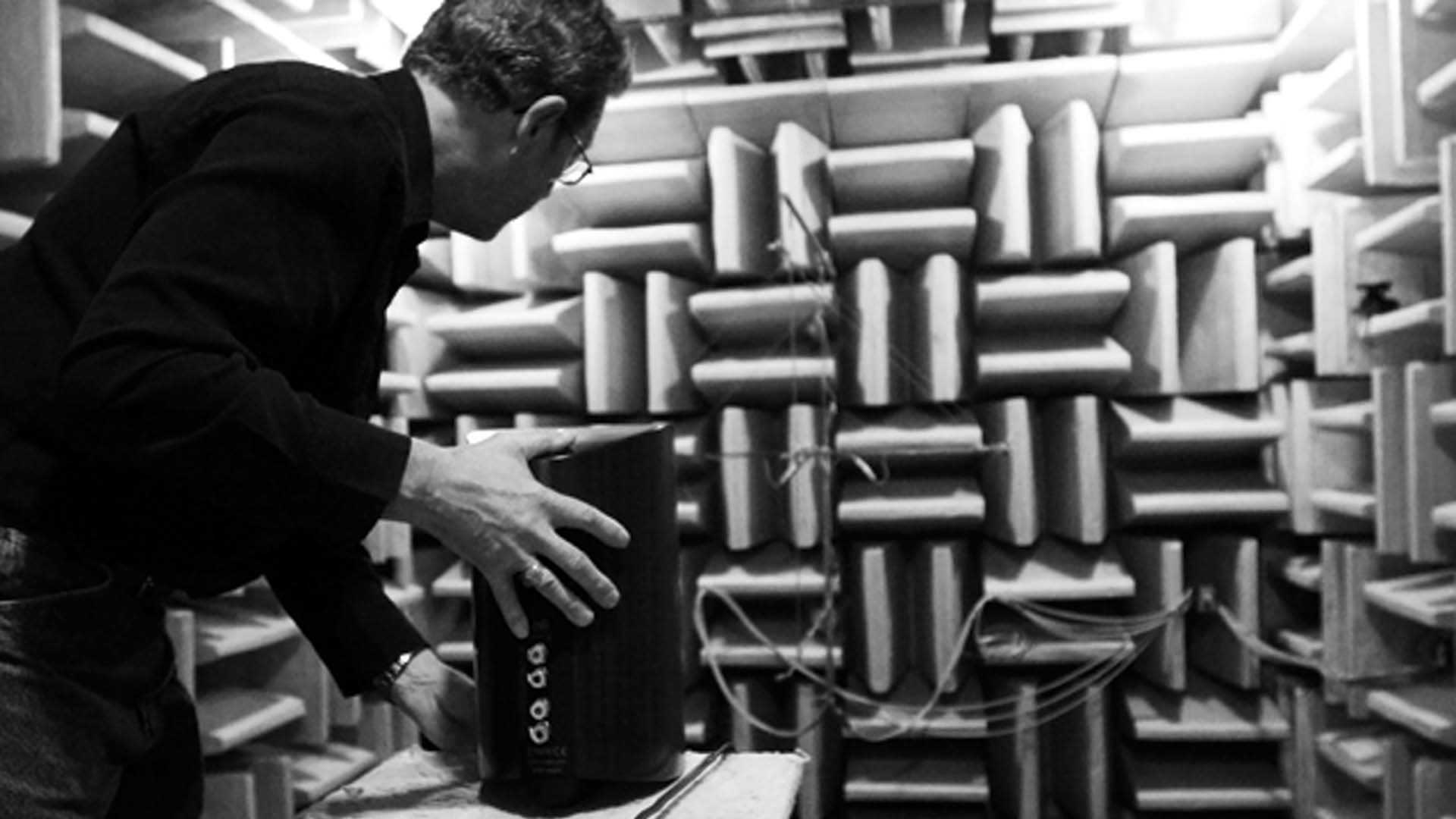
Athena, and an international outlook
PSB Speakers was acquired by Canadian hi-fi distributors The Lenbrook Group in 1985, just as the R series and the nicely affordable Atom were coming to market.
Then in 1989, Lenbrook also turned its distributorship of NAD Electronics into ownership, with that brand’s international reputation giving PSB in-roads to a new world of potential distribution. We asked Barton how much the company culture changed with Lenbrook’s arrival.
“Well it changed for me,” he says. “I could focus on what I enjoy the most – and that is firstly research and development, and secondly telling the story to the world; the promotion of it.”
The new research included the Athena project, begun at the NRC in 1988 as a jointly funded venture by Canadian companies including Axiom, Paradigm and PSB. Although often competitors, the companies involved could see the merits of sharing the results of pure research that might otherwise never get the required million-dollar funding.
“The goal of the Athena project was to design a ‘smart loudspeaker’, a speaker that could self-calibrate the frequency response in a room to fit a target curve determined by subjective double-blind screen listening tests, using DSP to do the room correction,” says Barton today.
Athena’s room-correction research was later used, inter alia, to create the ARC correction which is found in Anthem AV receivers. But the most useful result for PSB was that target curve.
“The target curve is what I took away from the Project,” Mr Barton tells us. “NAD Electronics has been using this target curve since 2008 and has this target curve with Dirac Room correction in their electronics. The first PSB product with the target curve based on the Athena Project was the PSB M4U 2 headphone in 2011. It relates to headphones which we call ‘RoomFeel’.”
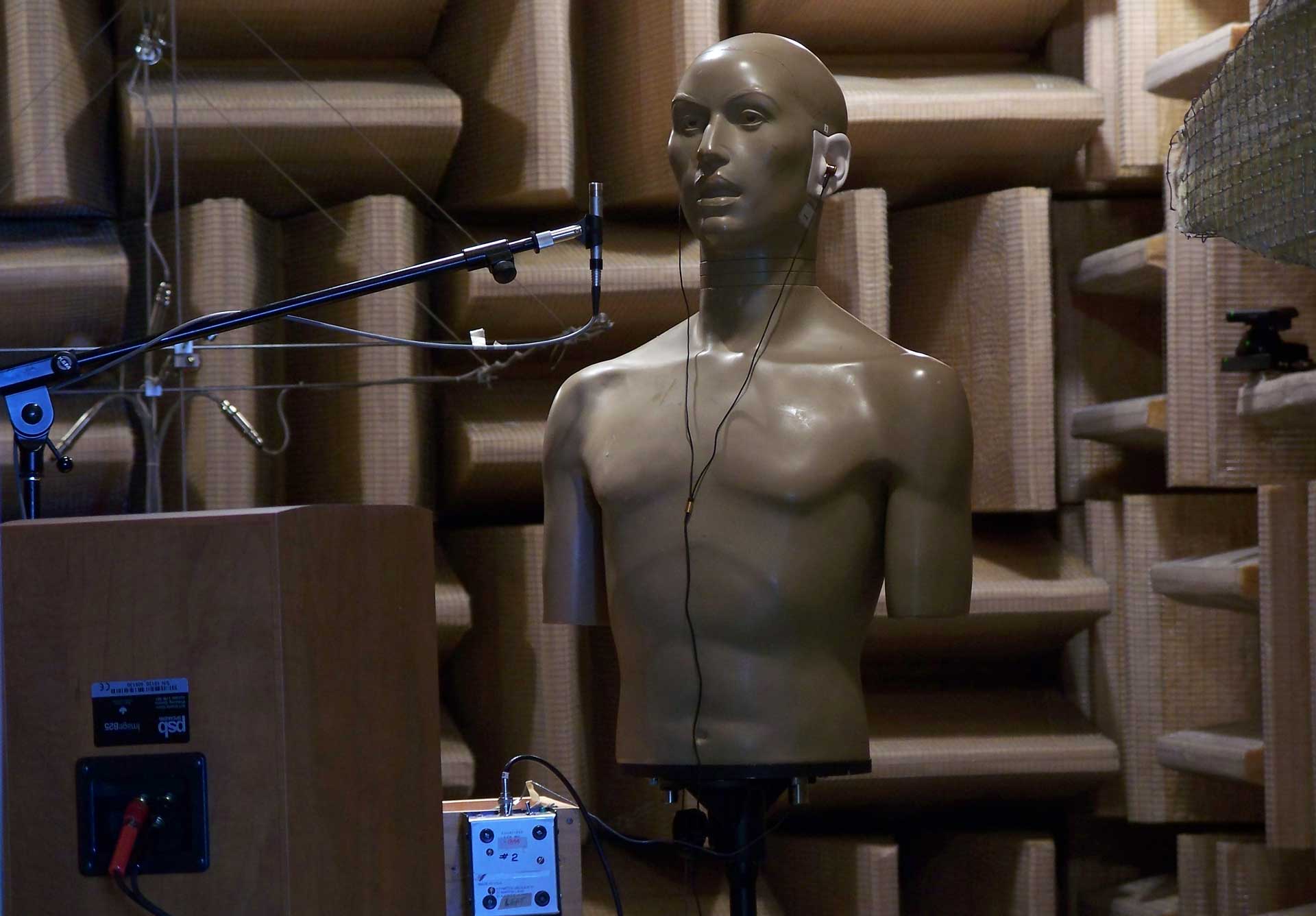
PSB’s M4U 2 headphones
True story. Three headphone reviewers meet in a New York restaurant during a press event: one American, one Swedish, one Anglo-Australian.
Their talk unsurprisingly turns to headphones – can the three agree on a favourite? Various models are discussed, some well-known, others obscure, until PSB’s M4U 2 is mentioned. All three shout ‘Yes!’, clink glasses, and the conversation moves on.
PSB’s debut headphones were perhaps not the most elegant headgear, being a fair size, and they were powered, requiring actual batteries, despite being wired rather than wireless. But their sound was superb, especially when you flicked a little three-position switch to ‘RoomFeel’ – the Athena target curve in action.
RoomFeel again referenced how the character of sound at the listening position combines direct sound and secondary sound, and that listeners have been shown to prefer some degree of the room’s secondary ‘sound power’ in combination with the direct sound.
Since headphones exclude this sound power, RoomFeel was designed
to put it back again. It’s comforting, and it doesn’t sound remotely like EQ.
As Barton says, “headphones do not have a room as a part of the reproduction chain, so without applying the RoomFeel on headphones you won’t hear what the musician and the producers heard when they made the music on direct radiating speakers in a room.”
(And if you happen to know that your favourite artist actually mixes on headphones, well, turn it off again.)
What does Barton say to people (like us sometimes) who see a contradiction in the idea of room correction in general, who prefer the idea of a pure audio path? Unsurprisingly, he cites NRC research.
“I believe in room and headphone correction,” he says, “and it’s based on what most people prefer from all the listening and testing we have done. So when you apply this to a headphone or loudspeaker, it does get higher scores.”
So there.

Revisiting a classic
Last year’s 50th-anniversary celebrations included a new design, the Passif 50
(pictured above left), paying tribute to that original Passif II which saw so many evolutions of the PSB sound through the early years at the NRC. So was Barton himself involved?
“Yes, I was very involved in the Passif 50 – I am the only one who knows the vintage product!”, he confirms. “So we tried to give it the look and materials of the original but with newer driver developments than in the earlier days. We now use optimisation software on every driver, cabinet and crossover design, and the Passif 50 was no exception.”
Combining nostalgic design with the latest technologies can be a difficult equation, but the Passif 50 certainly gets the look right, standing 66cm-high alone but 87cm once on their dedicated low stands, while the cabinet uses a classic open-grained walnut veneer, fronted by magnetic woven-cloth grilles.
A rear-panel plaque with a maple leaf announces the speaker’s anniversary status, and the first 500 units come with a handwritten letter from Mr Barton and a redeemable gift pack (backpack, water bottle, keychain!).
But the drivers are entirely 21st-century, with a neodymium-backed, ferrofluid-cooled titanium-dome tweeter fronted by a phase plug that gives particularly wide dispersion, from which PSB claims very acute imaging less reliant on a precise listening position.
The anniversary-edition Passif 50 retails in Australia at AU$4999 a pair. And even the top of PSB’s ranges are hardly megabucks – the floorstanding T800 is AU$18,999, the latest rangetopper of the uppermost Synchrony range, which began in 2007 with the Synchrony One. Has Barton never been tempted to design a no-limits loudspeaker, we asked?
“I have always tried to create products that represent good value – and I’ve always had a hard time throwing too much money at things that don’t add meaningful performance improvements,” he admits.
“Having said that, though, we are working on a product in the megabucks. It will be a while, because it will be a complicated product with new up-to-date technology and user-friendliness.”
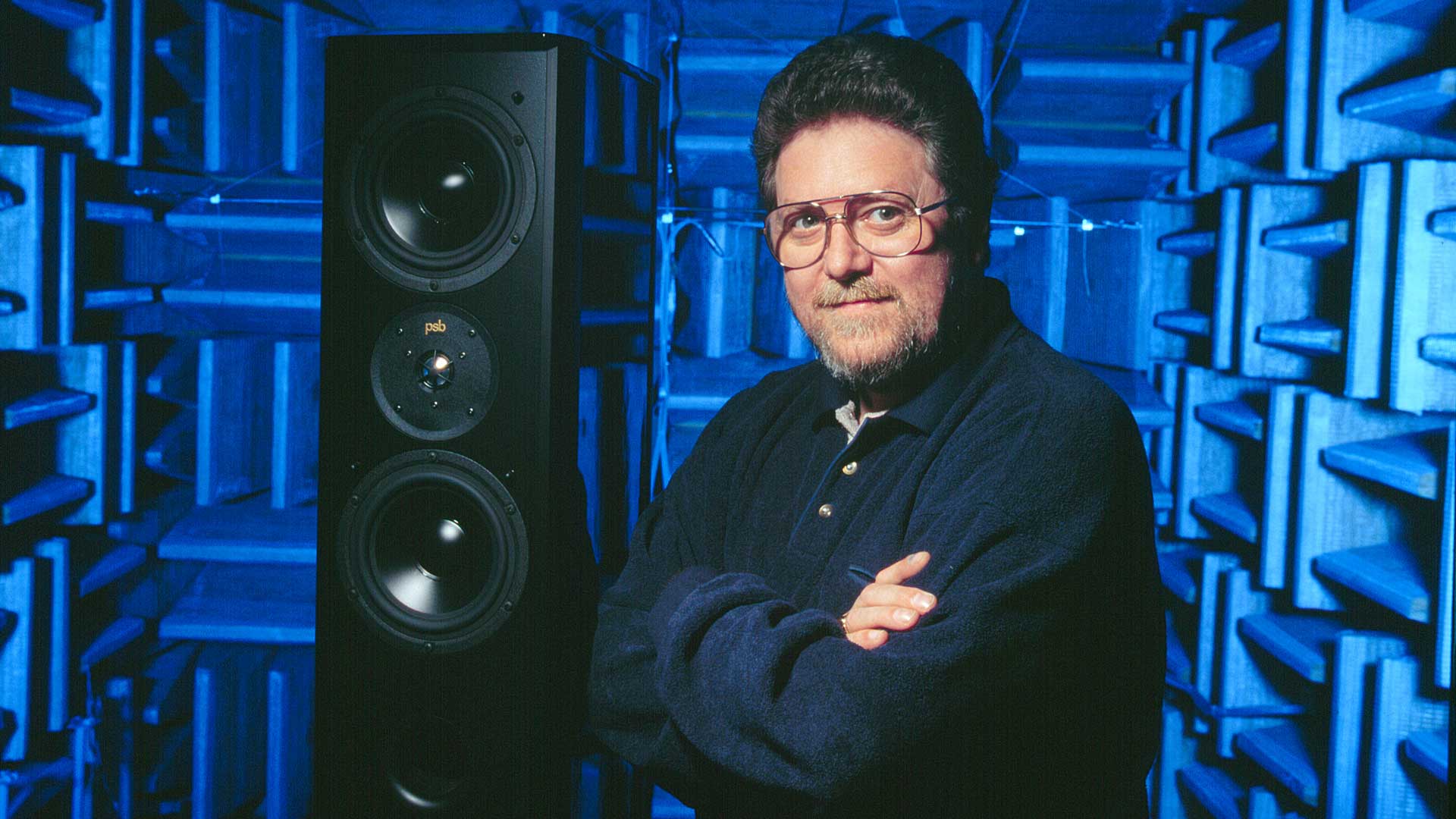
Looking forward and back
A megabucks speaker is not the only thing to look forward to from PSB
Speakers.
The company has made an active smart speaker by taking its third generation of Alpha speakers and adding internal amplification, as well as full streaming and multiroom operation courtesy of a BluOS module from Bluesound, PSB’s sister company at Lenbrook. It’s a wildly successful evolution of one of the company’s most popular ranges (the original Alphas arrived in 1991), winning a Sound+Image Award, and pointing to a promising path for a future of smart speakers in general.
And as this interview went to press, news arrived that PSB will be delivering probably the first pair of headphones in the world that will adopt Sonical’s CosmOS headphone operating system, described as ‘Headphone 3.0’ for the way it will allow listeners to add apps to their headphones’ “computer in your ear”.
Equally intriguing, we believe the headphones will go beyond Bluetooth with a new BodyWave antenna that enables UWB (Ultra-WideBand), most likely with a dongle transmitter, thereby perhaps achieving true wireless high-res transmission, something Bluetooth will never do (even with MQA’s new SCL6 codec, which will also be aboard the new headphones). But with all this new tech, these intriguing headphones are still, says Barton, “a ways off”. At least 2024, we gather from Lenbrook.
But still interesting times, then, for a company now pushing forward into its second half-century.
And from those first 50 years of PSB Speakers, what does Paul Barton look back on with most pleasure?
“This is an easy and simple question to answer,” he says. “It is the time I was able to spend with Floyd, when he lived and worked at NRC in Ottawa, both in the lab and in his home. I loved working on speakers in the chamber during the day and then sometimes at night taking the speaker prototypes over to Floyd’s home where we’d listen to the fruits of the day’s work. These are great memories.”
And he still has the violin built by his father? Of course he does. “It’s become a family heirloom,” he says.
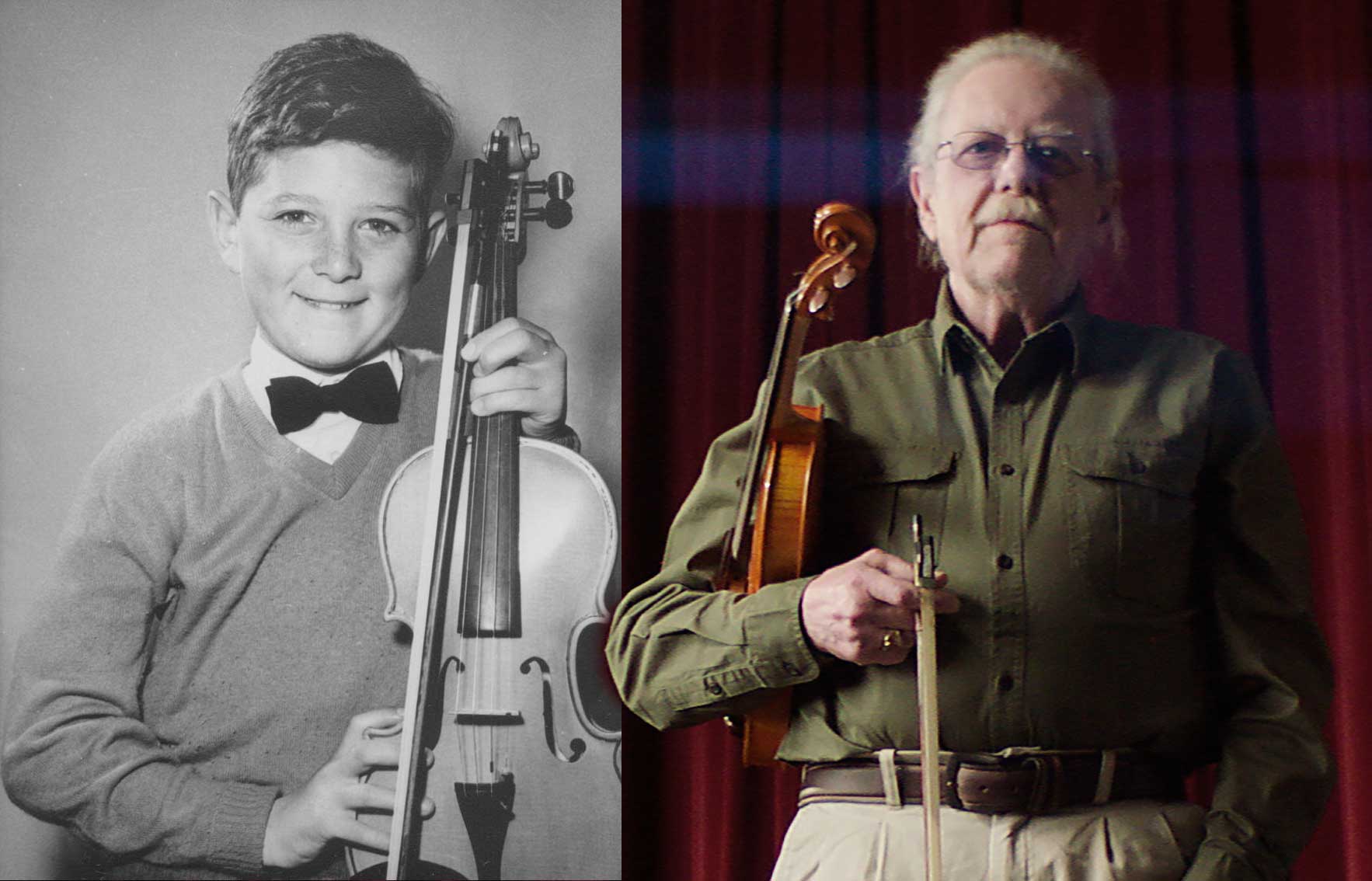

Jez is the Editor of Sound+Image magazine, having inhabited that role since 2006, more or less a lustrum after departing his UK homeland to adopt an additional nationality under the more favourable climes and skies of Australia. Prior to his desertion he was Editor of the UK's Stuff magazine, and before that Editor of What Hi-Fi? magazine, and before that of the erstwhile Audiophile magazine and of Electronics Today International. He makes music as well as enjoying it, is alarmingly wedded to the notion that Led Zeppelin remains the highest point of rock'n'roll yet attained, though remains willing to assess modern pretenders. He lives in a modest shack on Sydney's Northern Beaches with his Canadian wife Deanna, a rescue greyhound called Jewels, and an assortment of changing wildlife under care. If you're seeking his articles by clicking this profile, you'll see far more of them by switching to the Australian version of WHF.


